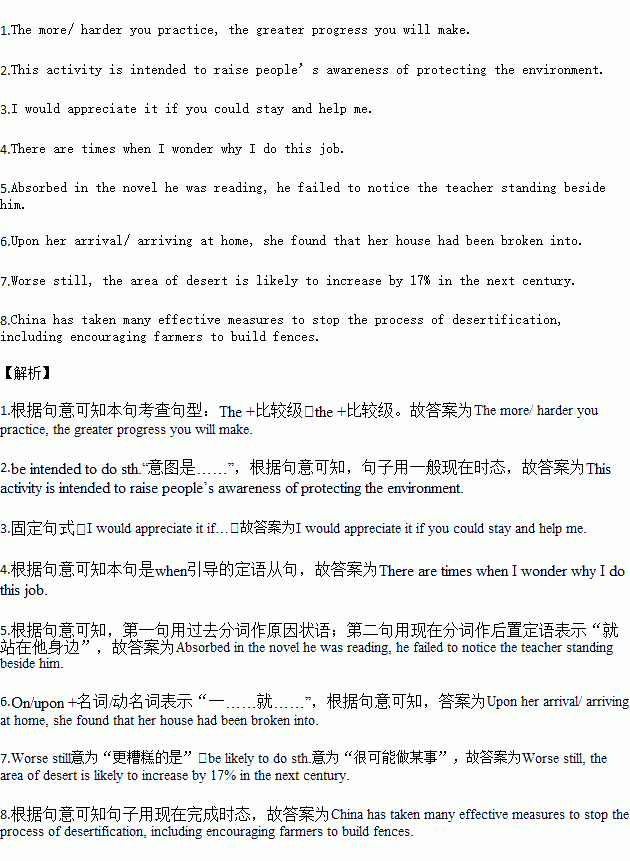��Ŀ����
1.��ԽŬ��ѧϰ����ȡ�õĽ���Խ��
____________________________________________________________________________
2.��λּ�ڻ������DZ�����������ʶ��
____________________________________________________________________________
3.����������������ң��ҽ�ʮ�ָм���
___________________________________________________________________________.
4.��ʱ����Ҳ�������Լ�ΪʲôҪ�������Ĺ�����
____________________________________________________________________________
5.��Ϊȫ���ע����������С˵����û��ע���ʦ��վ�������ߡ�
____________________________________________________________________________
6.��һ���ң��ͷ��ּ��ﱻ�����Ŷ��롣
____________________________________________________________________________
7.���������ǣ���һ������ɳĮ������п�������17%��
____________________________________________________________________________
8.�й��Ѿ���ȡ��������Ч��ʩ����ֹɳĮ���Ľ��̣���������ũ��դ����
____________________________________________________________________________
 ��У����ϵ�д�
��У����ϵ�д�
